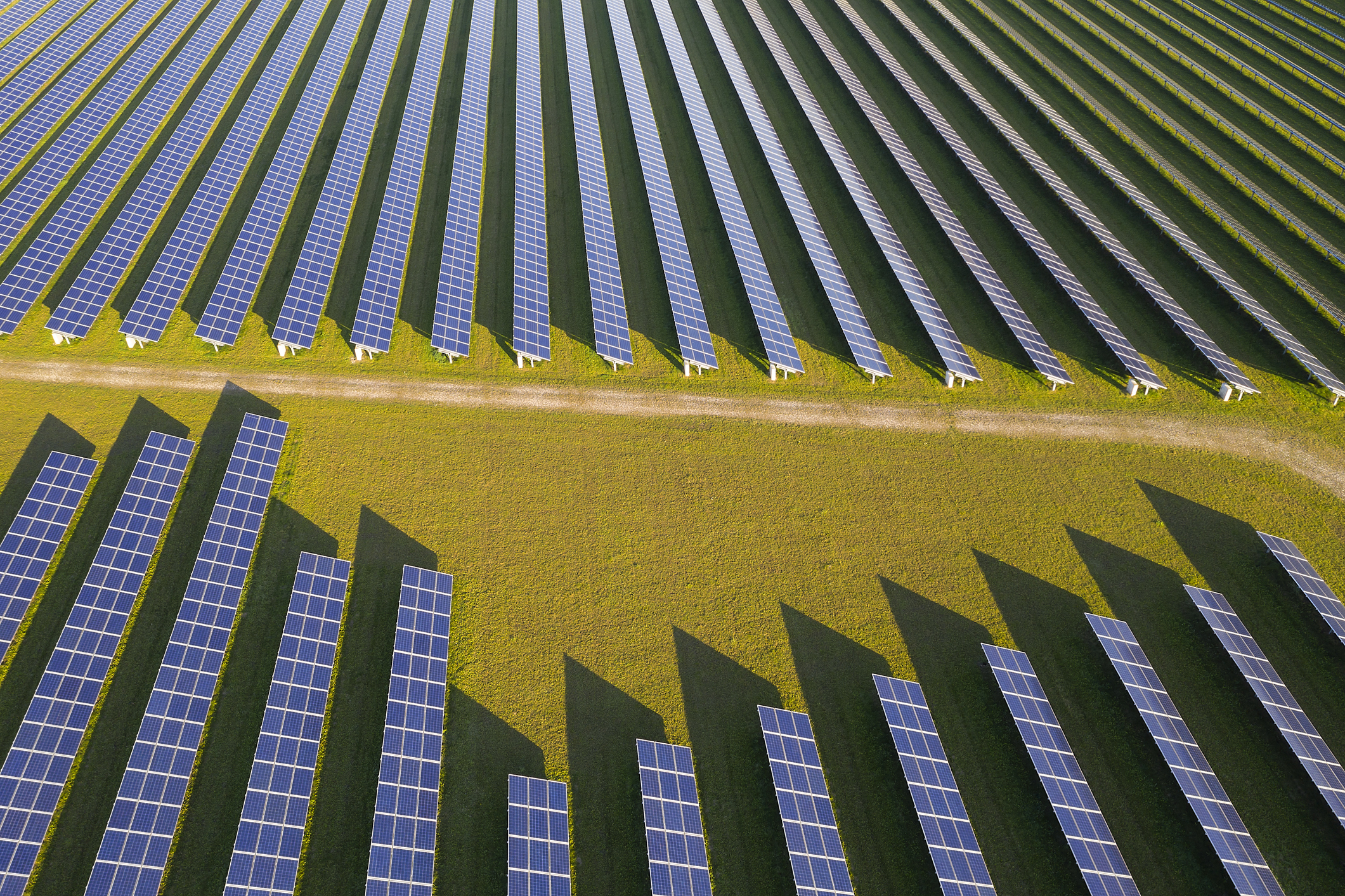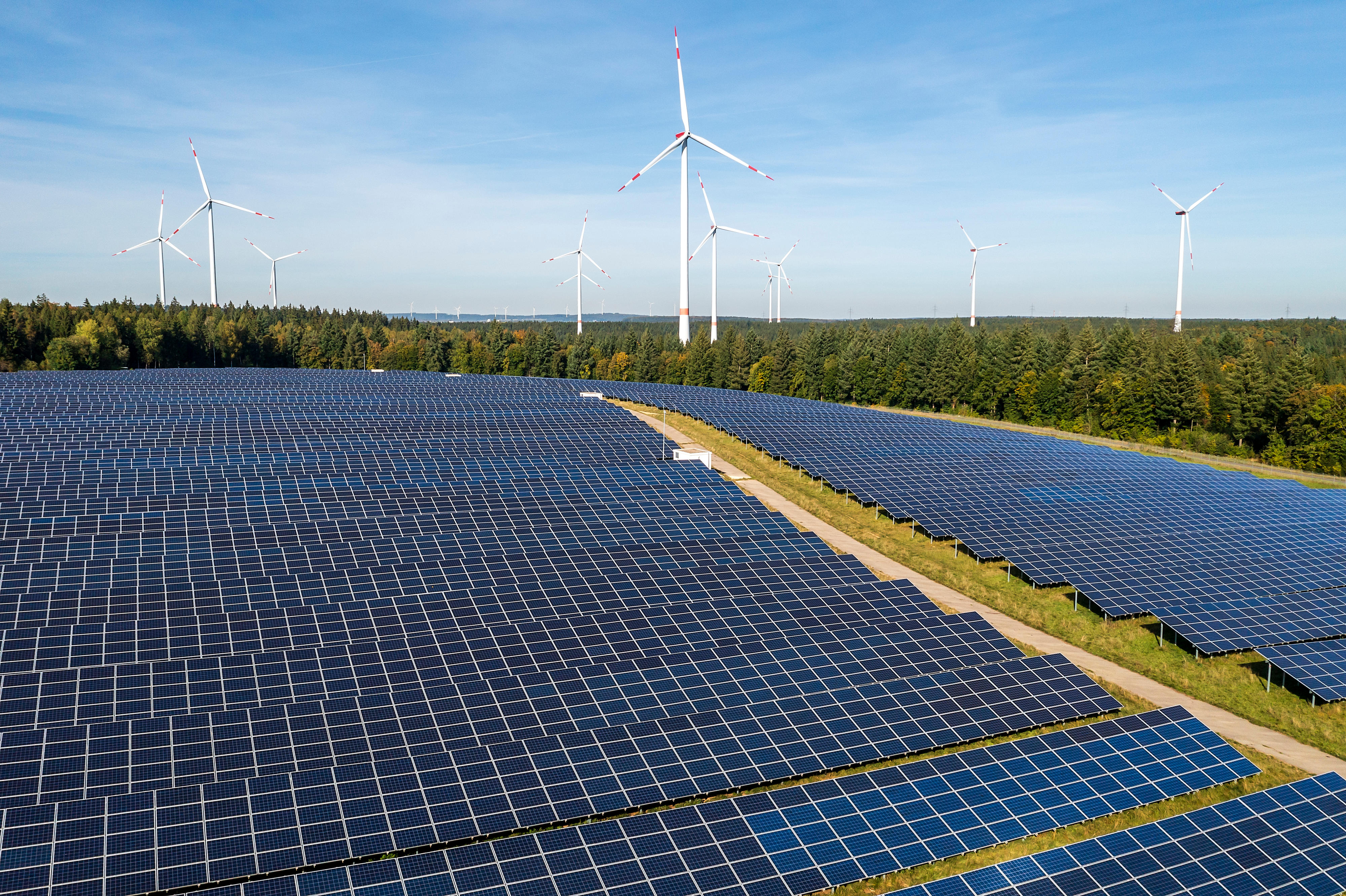Hint: This website is not optimized for your browser version.
Higher electricity consumption than in 2020 - Electricity generation and electricity trading in July 2021
12 August 2021 - Electricity consumption was up 4.5% and total generation was up 2.3% in July compared with the same month of the previous year. The average wholesale price was €81.37/MWh. Germany was a net importer in commercial foreign trade in the month.
Electricity consumption (network load) this July totalled 40.2 TWh, 4.5% higher than in July 2020 and nearly as high as in July 2019. The relaxing of coronavirus-related restrictions likely contributed to the increase.
The chart shows Germany's actual electricity consumption (network load) from May 2020 up to and including July 2021.
Although the total electricity generation was up 2.3% year-on-year at 38.8 TWh, owing to weather conditions generation from renewables was 6.7% lower than in the same month the year before, when solar photovoltaic (PV) generation had been very high. Renewable energy contributed 43.9% of total generation in the month (July 2020: 48.1%).
Conventional generation was 10.7% higher than in July 2020 but lower than in July 2019.
Compared with the same month last year, generation from nuclear energy was 30.4% higher and from hard coal more than twice as high, with both energy sources at the same level as in 2019.
There was a 16.7% rise in generation from lignite, but this was still less than in 2019, whereas generation from natural gas was down 39.6% and from pumped storage 27.4%.
Less electricity was produced by gas-fired power plants because of recent developments in gas prices. The gas price (TTF) reached a record high lately, making gas power stations less profitable on the electricity market. In the same month last year, gas prices had been unusually low, which explains the strong drop in generation from gas power stations.
The higher gas prices also led to stronger demand for coal and consequently for higher prices for carbon emission allowances.
In July 2020, the high level of generation from renewables, in particular from PV systems, led indirectly to more electricity being used by pumped storage. If generation is higher than consumption, the excess electricity can be used to fill pumped storage stations. If generation from renewables levels off, pumped storage can come quickly into play.
Because this July saw less generation from renewables and, at the same time, higher electricity consumption and higher generation from conventional energy sources, pumped storage stations did not produce as much electricity.
Highest and lowest generation from renewable energy
The lowest level of renewable generation occurred between 9pm and 10pm on Saturday, 3 July (8.0 GWh). Biomass was the biggest contributor in that hour (4.4 GWh), followed by hydropower with 2.2 GWh and onshore wind with 0.9 GWh. The remaining 0.5GWh came from offshore wind, PV systems and other renewables. The total proportion of renewable energies in electricity consumption (network load) for that hour was 17.1%, or 46.7 GWh.
Electricity generation from renewable energy sources reached its highest level within a single hour (62.9 GWh) on Thursday, 29 July between 12pm and 1pm. Onshore wind provided the biggest share, 26.3 GWh, followed by PV systems with 24.7 GWh. Offshore wind contributed a further 5.7 GWh. Biomass generation was 4.1 GWh and hydropower 2.1 GWh.
During this hour, renewable sources were able to generate a total of 66.6 GWh, meeting about 94.4% of electricity demand (network load).
On Saturday, 31 July, electricity from renewables covered all electricity needs between 9:15am and 4:45pm. It made up about 79% of consumption across the whole day (the 24-hour period from midnight to midnight on 31 July).
The chart shows actual electricity consumption (network load) and actual generation from renewable energy sources on 31 July 2021.
Wholesale electricity prices
The trend of rising wholesale prices seen in recent months continued, with the average wholesale electricity price reaching €81.37/MWh in July from €30.06/MWh in the same month last year.
The rise was primarily due to the 6.7% drop in renewable generation combined with the 4.5% increase in electricity consumption and 10.7% increase in conventional generation.
Generation costs also have a strong influence on wholesale prices because they include the costs of fuels and emission allowances, among other things. The coronavirus pandemic caused a temporary, global fall in electricity consumption, which is now returning to its previous level. Rising electricity demand leads to greater demand for fuels. Higher levels of conventional generation push up demand for emission allowances as well, making them more expensive. These factors affect the wholesale price. Consequently, overall prices are higher at the moment.
The German wholesale electricity price did not break the €100/MWh barrier at all last July, but this July it did so in 137 hours, so the average price was also higher. There were negative prices in only 11 of the 744 hours of trading (2020 24 hours).
Day-ahead wholesale prices in Germany | ||
July 2021 | July 2020 | |
Average [€/MWh] | 81.37 | 30.06 |
Minimum [€/MWh] | -20.06 | -64.99 |
Maximum [€/MWh] | 150.00 | 60.02 |
Number of hours with negative prices | 11 | 24 |
Number of hours with | 137 | 0 |
The highest German wholesale price was €150/MWh and occurred on Thursday, 8 July between 7pm and 8pm. Denmark and Czechia saw the same price in that period. The average price of all neighbouring countries was €118.88/MWh in that hour.
In Germany, the electricity consumption of 59.5 GWh coincided with a low level of renewable generation of 12.9 GWh. Conventional generation amounted to 39.6 GWh in the hour.
It was the first time since September 2020, when the German wholesale price hit €200.04/MWh, that the €150/MWh point was passed.
The lowest wholesale price on the day-ahead market was recorded between 2pm and 3pm on Saturday, 31 July and was minus €20.06/MWh. This occurred during the period mentioned above in which renewable generation met total electricity consumption (network loads) for many hours at a time. In the hour with the lowest price, the electricity consumption was 53.1 GWh and generation from renewables was 54.9 GWh. This was also reflected in the forecast residual load, which correlates with the day-ahead price. The residual load gives the share of electricity consumption that is not covered by wind or solar PV generation.
At an average of €77.95/MWh, prices in neighbouring countries were similar to those in Germany. The lowest average price of €57.49/MWh was registered for Norway 2 and was caused by the high proportion of renewables in the generation mix in that country. Prices there ranged from €2.90/MWh to €62.61/MWh in the month, so the lowest price was higher than in Germany (where it was negative €20.06/MWh) but the highest price was less than half as high.
Commercial foreign trade
Germany imported about 1.2 TWh more electricity than it exported in the month, making it a net importer. Net imports in July 2020 were about 0.3 TWh. Higher demand and lower generation from renewables helped to push up net imports. The high wholesale prices also make it worthwhile to import electricity from neighbouring countries when demand was high. There is an interaction between supply and demand across the whole of Europe. Electricity is produced within Europe wherever it is cheapest. When Germany imports electricity, it benefits from the more favourable conditions for generation in other countries, and vice versa.
In July 2021 Germany was a net exporter of electricity to:
• Austria, with 1,163.4 GWh (up 37.2% from July 2020);
• Luxembourg, with 310.4 GWh (down 2.2% from July 2020);
• Czechia, with 54.9 GWh (down 88.1% from July 2020);
• Poland, with 1.5 GWh (down 99.6% from July 2020);
• Netherlands, with 0.3 GWh (net imports in July 2020).
Germany was a net importer of electricity from:
• Switzerland, with 1,025.1 GWh (net exports in July 2020);
• Denmark, with 574.9 GWh (down 41.3% from July 2020);
• Norway, with 455.1 GWh (trading was not yet possible in July 2020);
• France, with 386.3 GWh (up 3,687.3% from July 2020);
• Belgium, with 141.8 GWh (trading was not yet possible in July 2020);
• Sweden, with 135.8 GWh (down 40.5% from June 2020).
One reason for the change in the direction of trading with Switzerland is the price development. Electricity from Switzerland was less expensive than in Germany in 424 of the 744 hours of trading. But in July 2020, electricity from Germany was less expensive than in Switzerland for 456 hours of trading, making it cheaper for Switzerland to import electricity from Germany. This year, it is the other way around.
The large percentage change in trading with France is due to the net import figures, which leaped from 10.2 GWh in July 2020 to 386.3 GWh in July 2021.
However, they were around the same and actually slightly lower than net imports in June this year, which were 426.9 GWh.
The chart shows Germany's commercial foreign trade in July 2021.

